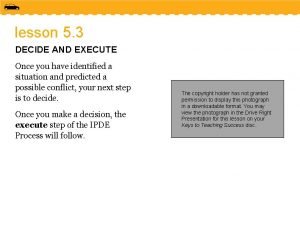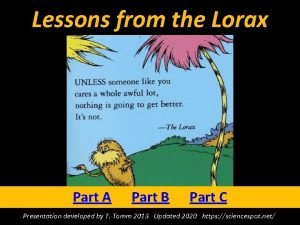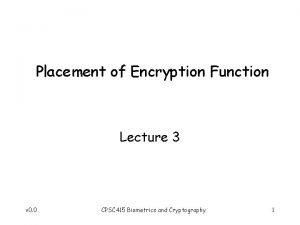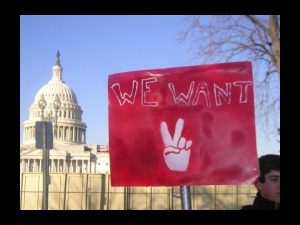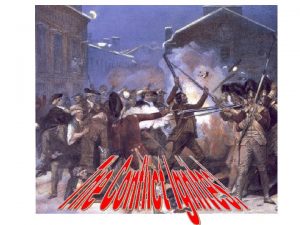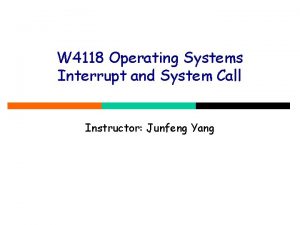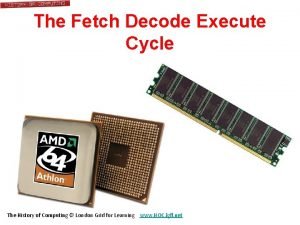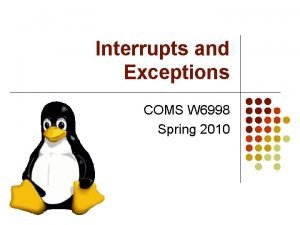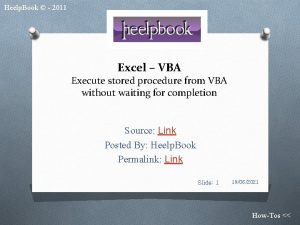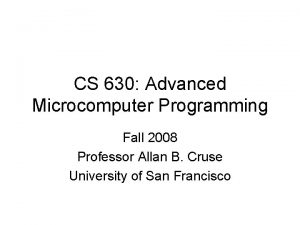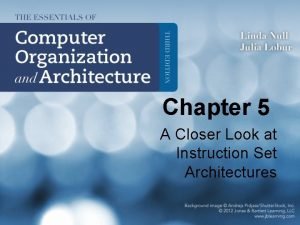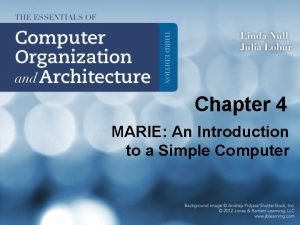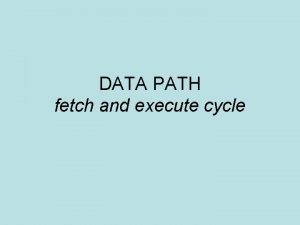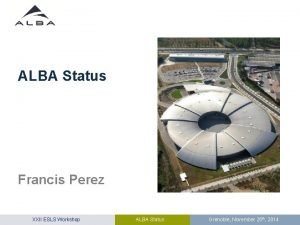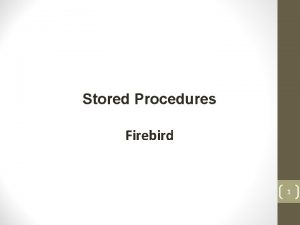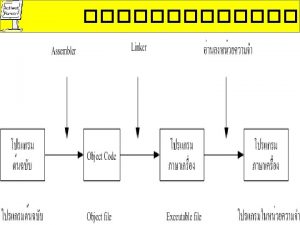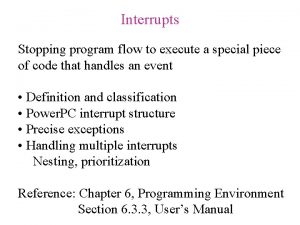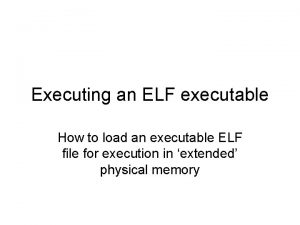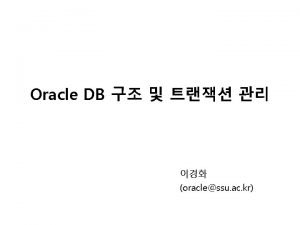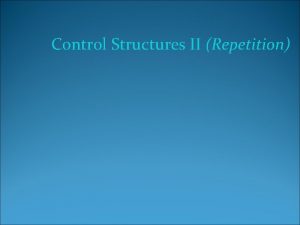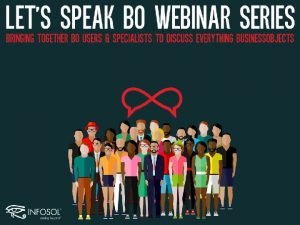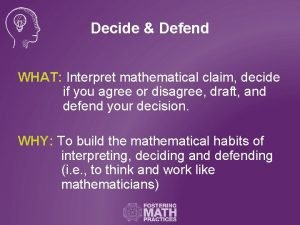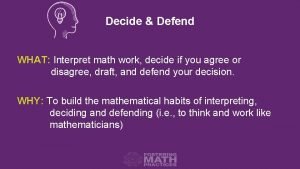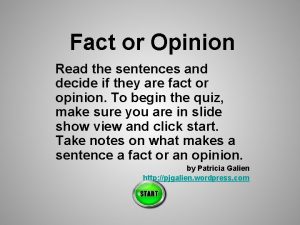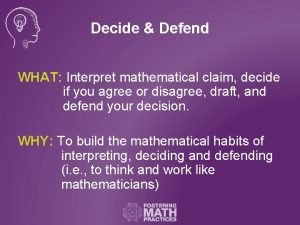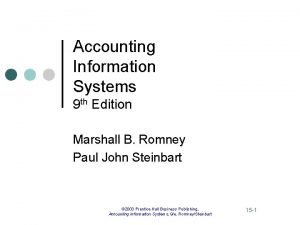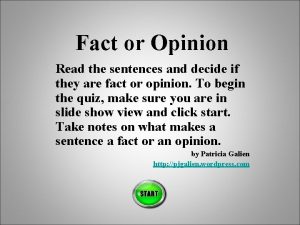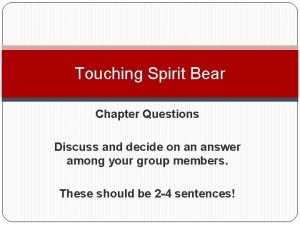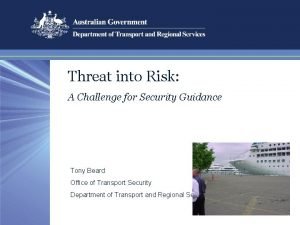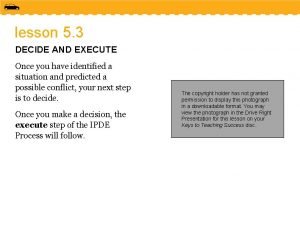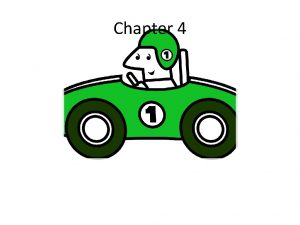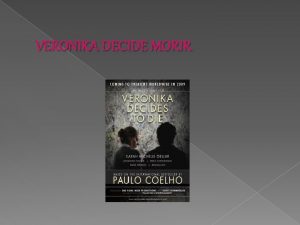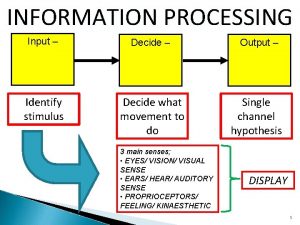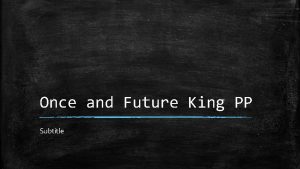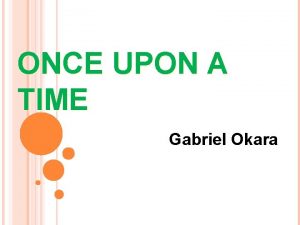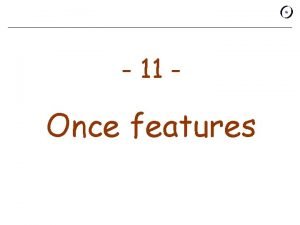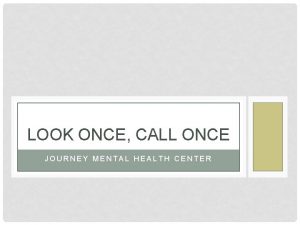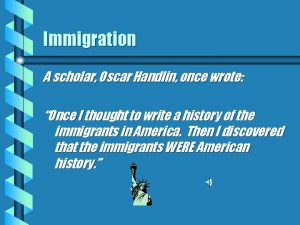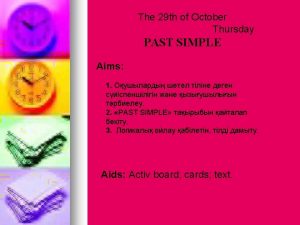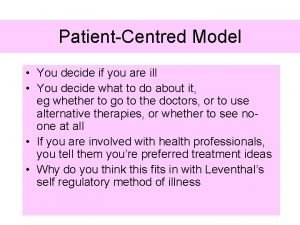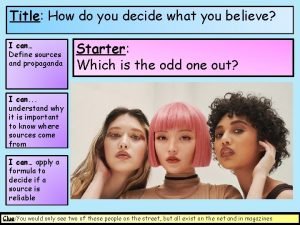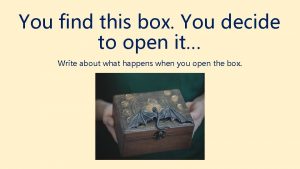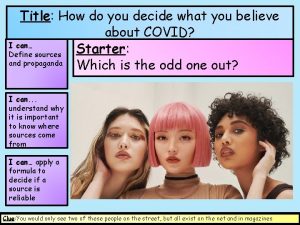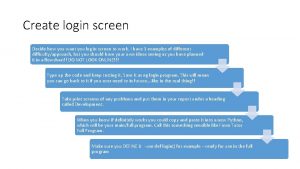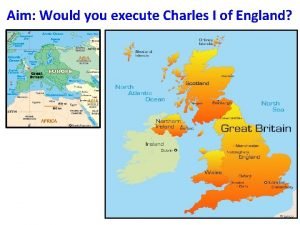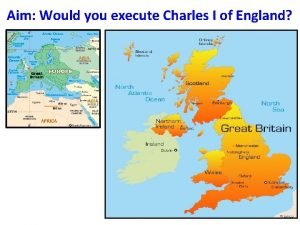lesson 5 3 DECIDE AND EXECUTE Once you







































- Slides: 39

lesson 5. 3 DECIDE AND EXECUTE Once you have identified a situation and predicted a possible conflict, your next step is to decide. Once you make a decision, the execute step of the IPDE Process will follow. The copyright holder has not granted permission to display this photograph in a downloadable format. You may view the photograph in the Drive Right Presentation for this lesson on your Keys to Teaching Success disc.

OBJECTIVE Name three decisions you must make when applying the IPDE Process.

Drivers must continually identify and predict until they have enough information to make correct decisions. To execute a decision means that you carry out the action that you have decided to do. In this situation, reducing speed so the passing car can merge safely is a low-risk driving action.

OBJECTIVE List the three most important actions you can take to avoid conflict.

Decide As you follow your intended path of travel, your decision might be to maintain speed, change direction, or communicate. You might decide to use a combination of these actions. Be prepared to rethink your decisions as zones close and greater hazards are presented.

The driver of the yellow car decided to accelerate to provide space for the passing driver to return to the right lane. What might have happened if the driver of the yellow car had decided not to accelerate?

Decide to Change Speed Any decision you make will be influenced by the speed of your own vehicle as well as the speed of other vehicles. You can decide to maintain your speed, decelerate, brake, or accelerate. Base your decision about speed control on your evaluation of the situation as well as the possible consequences of your actions.

Decide to Change Direction In order to change your position in the roadway, you will steer to the right or left. A greater change of direction might even be a lane change. You can use an escape path into an open zone to avoid conflict. This area of space all around your vehicle is called a space cushion.

OBJECTIVE Describe three different lane positions available to you within your lane.

Three different lane positions are available to you within your lane. Lane Position 1 This is the safest position under normal driving conditions. In this position, you have the most space around your vehicle.

Lane Position 2 You might decide to use this position when there is a closed right-front zone with an open left-front zone.

Lane Position 3 Use this position when there is a closed left-front zone with an open right-front zone.

There may be times when the situation requires a greater change in direction than the three lane positions. You may decide that the best position, in some situations, is to straddle a lane line. Return to lane position 1 as soon as it is safe to do so.

Decide to Communicate The decision to communicate with other users of the roadway helps reduce the possibility of conflict. You can decide to communicate with others by: • using lights • horn • vehicle position • eye contact • body movement

After deciding the best method of communicating, you will execute that action to inform others of your decision. This driver decided to use body movement by waving the driver on the left through the intersection first.

Traffic Flow The safest position in traffic is where the fewest vehicles surround you. Continually analyze your left, front, and right zones and make decisions to adjust your speed or direction if one of your zones begins to close. Use the following techniques to manage time, space, and distance in order to maintain your safe path of travel.

Minimize a Hazard You always want to minimize a hazard, or reduce the possibility of conflict, by deciding to put more distance between yourself and the hazard. In this traffic scene, the yellow car is approaching the parked cars on the right. What might the driver of the yellow car predict, decide, and execute to minimize a hazard?

Separate Hazards There will be times when you face more than one hazard at the same time. When this occurs, do not try to handle both or all hazards at once. Instead, decide to adjust your speed to let them separate so you can deal with only one hazard at a time.

The driver in this traffic scene sees an approaching truck. Both are headed for the same one-lane bridge and meet on the bridge at the same time. To avoid trouble, what might the driver do to separate hazards? The copyright holder has not granted permission to display this photograph in a downloadable format. You may view the photograph in the Drive Right Presentation for this lesson on your Keys to Teaching Success disc.

Compromise Space Sometimes hazards cannot be minimized or separated. When this occurs, you must decide to compromise space by giving as much space as possible to the greater hazard. The driver of the yellow car is compromising space to give more space to the greater hazard—the truck.

Execute Carrying out your decision in order to avoid conflict is the execute step in the IPDE Process. This step involves the physical skills used in driving. In most cases, you will execute routine actions and maneuvers. More important actions, however, involve timing and placement of your vehicle to avoid conflict. The important actions you will execute are • control speed • steer • communicate

Control Speed There are different techniques to control vehicle speed. Always check your rear zone before decelerating or braking in any manner. • Speed can be maintained but reduced by merely releasing the accelerator when you see a red light. • Use gentle pressure on the brake if more slowing is needed.

When greater deceleration is needed, use firm braking. The amount of braking needed will vary with the situation, the speed of your vehicle, the condition of the roadway, and the condition of your brakes.

Avoid locking the brakes in an emergency stop. Locked brakes make steering impossible because the wheels must be turning to provide traction for steering. Some newer vehicles have an antilock braking system that helps prevent loss of steering control. An antilock braking system helps stop your vehicle.

The driver of the car in this traffic scene is entering the intersection at the same time the white car from the right makes a right turn and enters the driver’s path. The driver avoids locking the brakes so as not to lose steering control.

Steering Too Much When you decide to steer away from a possible conflict, execute just the amount of steering needed. If you turn the steering wheel too much, you can lose control of your vehicle, especially at higher speeds.

Too Little Steering Try to steer just enough to avoid a conflict without making jerky or sudden movements. Drivers who keep space cushions around their vehicles usually have an escape path to steer into, thus reducing risk.

safe driving tip Daytime Lights Some cars are equipped with daytimerunning lights. Research shows that your chance of being in a daytime crash is reduced by daytime-running lights or using low-beam headlights all the time.

Communicate by using the following: • headlights, taillights, and brake lights • turn-signal lights • parking lights and hazard flashers • back-up lights • horn • vehicle position • eye contact and body movement

Headlights, Taillights, and Brake Lights Using daytime headlights reduces daytime crashes by improving the visibility of the vehicle. Use headlights during periods of reduced visibility. Your vehicle can be seen more easily if your headlights are on, even during the day.

Turn-Signal Lights Turn them on three to five seconds before making any change in direction.

Parking Lights and Hazard Flashers When you are parked along the roadway but not in an emergency situation, have your parking lights turned on. If your vehicle is disabled, turn on your hazard flashers. Be prepared to change your path of travel when you see the blinking or flashing lights of a stopped delivery truck.

Back-Up Lights White back-up lights let others know you are backing up. Look for back-up lights on vehicles in parking lots.

Horn A light tap is usually enough for a warning. In an emergency, a loud blast may be necessary.

Vehicle Position The position of your vehicle in the roadway communicates a message. It indicates to others your intended path of travel.

Eye Contact and Body Movement Try to develop eye contact with other roadway users. Body movements such as a wave of the hand may tell a driver to proceed.

Combine Actions You often will need to execute a combination of actions. Sometimes you might need to accelerate and steer at the same time.

If you were driving alongside the parked truck in the traffic scene, you would need to combine several actions. What actions would you take?

lesson 5. 3 review 1. Describe three situations where you would use each of the three lane positions. 2. List the three actions you can execute to avoid conflict and explain how these actions help you prevent conflicts.
 When you apply the ipde process you may decide to
When you apply the ipde process you may decide to What does the once ler think is important
What does the once ler think is important Explain about the placement of encryption function.
Explain about the placement of encryption function. Did you ever have to finally decide
Did you ever have to finally decide Patriot loyalist or neutral you decide worksheet
Patriot loyalist or neutral you decide worksheet Dual mode in os
Dual mode in os What is the fetch decode execute cycle
What is the fetch decode execute cycle Fetch execute cycle
Fetch execute cycle Vba stored procedure
Vba stored procedure Addw -8(%bp), %ax
Addw -8(%bp), %ax Fetch decode execute cycle steps
Fetch decode execute cycle steps Fetch decode execute cycle steps
Fetch decode execute cycle steps Fetch execute cycle adalah
Fetch execute cycle adalah Spare or execute alba
Spare or execute alba Firebird stored procedure
Firebird stored procedure Fetch decode execute memory writeback
Fetch decode execute memory writeback Fetch execute cycle steps
Fetch execute cycle steps Program flow control with interrupts
Program flow control with interrupts Elf executable
Elf executable Failed to execute 'fetch' on 'window': failed to parse url
Failed to execute 'fetch' on 'window': failed to parse url Java tvorca
Java tvorca Brk segment overflow in thread #1: can't grow to
Brk segment overflow in thread #1: can't grow to Juliet's servant and mentor. *
Juliet's servant and mentor. * A loop that continues to execute endlessly is called
A loop that continues to execute endlessly is called Execute plan b
Execute plan b Tell me what you eat and i shall tell you what you are
Tell me what you eat and i shall tell you what you are On dill's last night in maycomb, dill and jem decide to
On dill's last night in maycomb, dill and jem decide to Decide and defend
Decide and defend Decide and defend
Decide and defend Read the sentences and decide if they are true or false
Read the sentences and decide if they are true or false Decide and defend
Decide and defend What did stephanie cromwell and elizabeth venko decide?
What did stephanie cromwell and elizabeth venko decide? What condition threatens peeta's life
What condition threatens peeta's life Read the sentences and decide if they are
Read the sentences and decide if they are Touching spirit bear chapter 10
Touching spirit bear chapter 10 You say you love rain
You say you love rain Good health is a choice agree or disagree
Good health is a choice agree or disagree If you think you can you can poem
If you think you can you can poem Follow you wherever you may go
Follow you wherever you may go You only need to be lucky once
You only need to be lucky once
